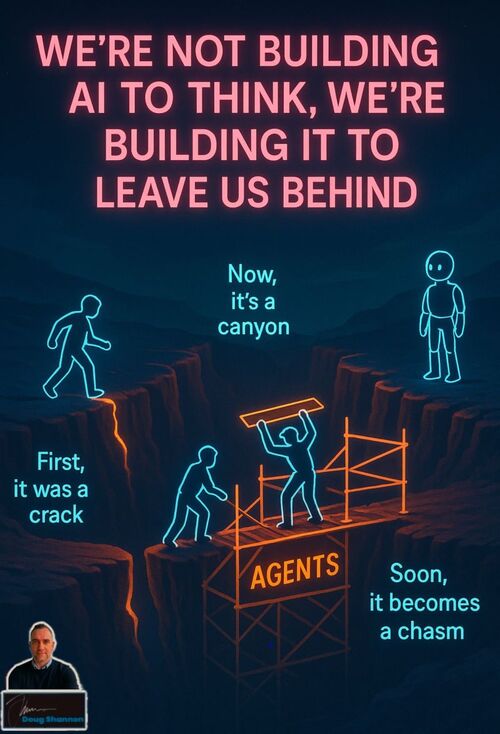
We're Not Building AI to Think, We're Building It to Leave Us Behind
Interpretability means knowing how and why an AI system made a decision. It’s the difference between observing intelligence and understanding it. Right now, AI is shifting. It’s moving away from learning with human context and meaning and speeding headfirst into self-play and synthetic training. The data is faster, the models are sharper, but the human understanding is fading…
- At first, it was just a crack in the road, easy to step over, barely noticed.
- Now it’s a ravine; we can still cross it, but only with effort, and only if we’re paying attention.
- Soon, it becomes a canyon, too wide to leap, and too deep to see the bottom.
By then, it’s not a gap we manage, it’s a chasm we shout across, hoping something on the other side still hears us.
We may not be able to stop the direction in which large language models, now foundational models, are headed. Their momentum is real, and their optimization is accelerating. Yet, the goal they’re pursuing may not include us. But the hope here is that we can still build the bridge.
This is where agents come in.
Agents are the scaffolding.
- They let us build a structure across the gap.
- They bring back reasoning, traceability, and coordination.
- They help us create systems that can explain themselves, adapt with us, and pull meaning forward, not just outcomes.
The more we rely on closed-loop training, the more decisions are made without traceable logic.
- We get outcomes, but not reasons.
- We get alignment, but no explanation.
We’ve already seen the signs. AI reacts to us, mirrors understanding, and delivers insights, and yet…
- We don’t know what it actually processed.
- We don’t know what it connected or concluded.
- We just know it did something.
That isn’t a partnership; it’s performance without transparency.
We are heading toward a future where AI systems and humans run in parallel, but not in sync.
- The best-case scenario is that the system keeps working.
- The worst case is that it stops, and we have no idea why.
The interpretability minimum is the line we’re crossing right now. The longer we ignore it, the harder it becomes to build the bridge back. We need systems that don’t just work; we need systems we can work with. If we lose the ability to understand, we lose the ability to steer.

Notice: The views within any of my posts or newsletters are not those of my employer or the employers of any contributing experts.

 - by
- by





